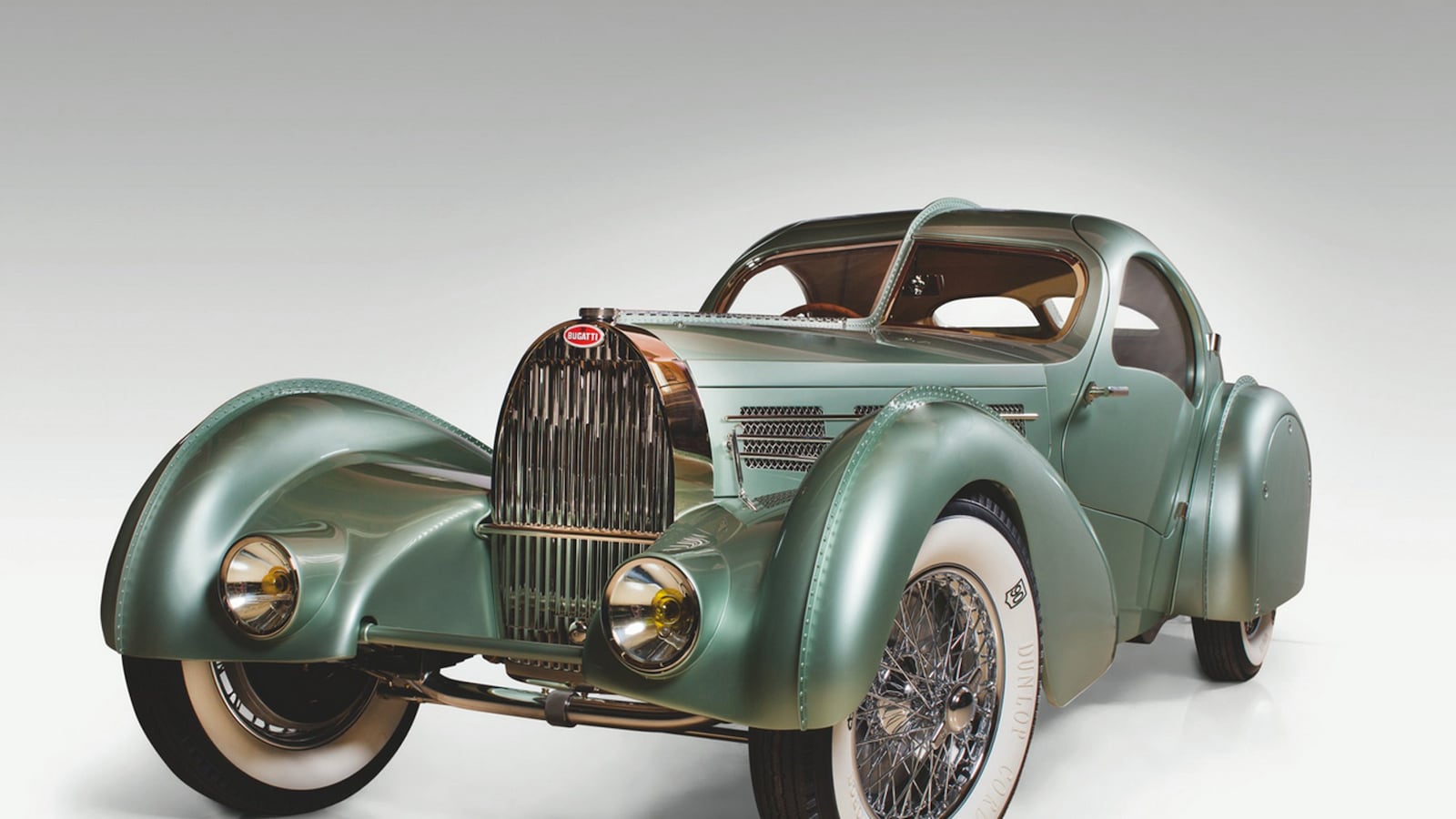
While Porsches, Ferraris, and Bugattis may be dream cars for most people, the design masterminds behind the mass-produced luxury vehicles have had “dream” visions of their own—ones of the future.
Pairing seventeen visionary vehicles with their preliminary drawings and models, the High Museum of Art in Atlanta is looking at what role concept cars play in shaping future innovations in the exhibition, Dream Cars: Innovative Design, Visionary Ideas.
The show begins with a look at the idea of independent makers, people who made cars for themselves, or who felt they were creating the foundation of the future through their designs—like the 1936 Stout Scarab, a radical sedan concept comprised of aluminum panels that shaped its smooth, bulbous body. Its roomy interior allowed for the seats to change positions and even included a table.
Using his aeronautical expertise, the car’s creator, William Bushnell Stout, “believed the use of aircraft construction techniques would result in a futuristic car that would be faster and more economical than a conventional automobile,” curator Sarah Schleuning writes in the exhibition catalog. Through its unique design, the world saw the beginnings of the first minivan.
GALLERY: America’s Dream Cars: One-of-a-Kind Models That Changed the Way We Drive (PHOTOS)

Another concept that anticipated future automotive trends was the 1955 Buick Centurion XP-301. Fixed with a full bubble top, the panoramic view—in theory—eliminated blind spots and the need for mirrors. In addition, a closed-circuit camera was installed at the rear of the vehicle which transmitted to a 4x6 inch screen near the driver—the very first rear-view camera, something that is becoming standard in all vehicles today.
Designer Paul Arzens’s 1942 L’Œuf Electrique, or “electric egg,” was designed as his personal car during the occupation of Paris in the middle of World War II. The battery operated car’s compact body is guided by three wheels and resembles the shape of its given name—a Plexiglas, aluminum egg. “It’s clearly a precursor to not only the French mini car movement post World War II,” Schleuning told The Daily Beast, “but also the electric cars that you see today.”
The last section of the show attempts to answer the one question sure to be asked by visitors—why were these cars made and where were they seen? “These were meant to be seen in the international arena of fairs and expositions,” Schleuning said. “They were put up on a pedestal and presented as this vision of the future, but in the end they were oddly ephemeral and many of them were destroyed.”
While none of the cars have seen full-blown production, a few have been created in multiples. Six to nine of the 1936 Stout Scarab were made through subscription sales—interested buyers would place an order to eliminate the risk of over production. The 1941 Chrysler Thunderbolt was produced in five different colors during its prototype tour, and the cars were later sold.
Finally, the 2010 Proche 918 on display serves as the visual basis for the concept of the Spyder, currently rolling into production. With this final concept, visitors see how—aside from the technology—the design process hasn’t really changed.
Dream Cars: Innovative Design, Visionary Ideas is on display at the High Museum of Art in Atlanta until September 7.





